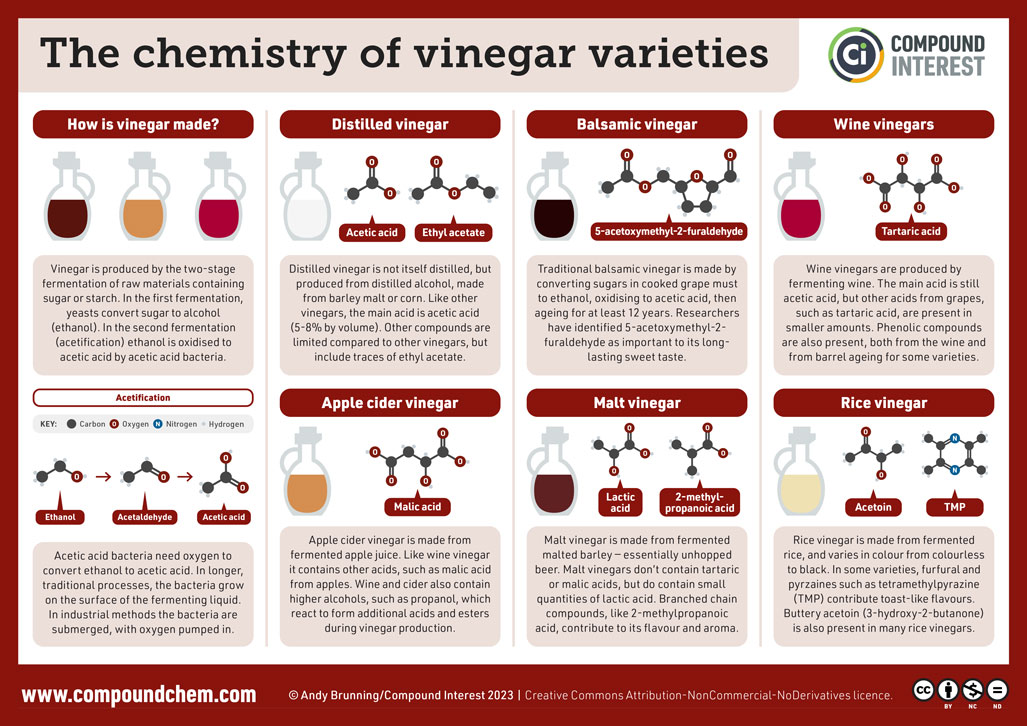
This Article From Issue
July-August 2024
Volume 112, Number 4
Page 200
How Is Vinegar Made?
Vinegar is produced by the two-stage fermentation of raw materials containing sugar or starch. In the first fermentation, yeasts convert sugar to alcohol (ethanol). In the second fermentation (acetification) ethanol is oxidized to acetic acid by acetic acid bacteria.
Distilled Vinegar
Distilled vinegar is not itself distilled, but produced from distilled alcohol, made from barley malt or corn. Like other vinegars, the main acid is acetic acid (5-8% by volume). Other compounds are limited compared to other vinegars, but include traces of ethyl acetate.

Balsamic Vinegar
Traditional balsamic vinegar is made by converting sugars in cooked grape must to ethanol, oxidizing to acetic acid, then ageing for at least 12 years. Researchers have identified 5-acetoxymethyl-2-furaldehyde as important to its long-lasting sweet taste.
Wine Vinegars
Wine vinegars are produced by fermenting wine. The main acid is still acetic acid, but other acids from grapes, such as tartaric acid, are present in smaller amounts. Phenolic compounds are also present, both from the wine and from barrel ageing for some varieties.
Acetification
Acetic acid bacteria need oxygen to convert ethanol to acetic acid. In longer, traditional processes, the bacteria grow on the surface of the fermenting liquid. In industrial methods the bacteria are submerged, with oxygen pumped in.
Apple Cider Vinegar
Apple cider vinegar is made from fermented apple juice. Like wine vinegar it contains other acids, such as malic acid from apples. Wine and cider also contain higher alcohols, such as propanol, which react to form additional acids and esters during vinegar production.
Malt Vinegar
Malt vinegar is made from fermented malted barley—essentially unhopped beer. Malt vinegars don’t contain tartaric or malic acids, but do contain small quantities of lactic acid. Branched chain compounds, like 2-methylpropanoic acid, contribute to its flavor and aroma.
Rice Vinegar
Rice vinegar is made from fermented rice, and varies in colour from colourless to black. In some varieties, furfural and pyrzaines such as tetramethylpyrazine (TMP) contribute toast-like flavours. Buttery acetoin (3-hydroxy-2-butanone) is also present in many rice vinegars.
www.compoundchem.com © Andy Brunning/Compound Interest 2023 | Creative Commons Attribution-NonCommercial-NoDerivatives license.

American Scientist Comments and Discussion
To discuss our articles or comment on them, please share them and tag American Scientist on social media platforms. Here are links to our profiles on Twitter, Facebook, and LinkedIn.
If we re-share your post, we will moderate comments/discussion following our comments policy.